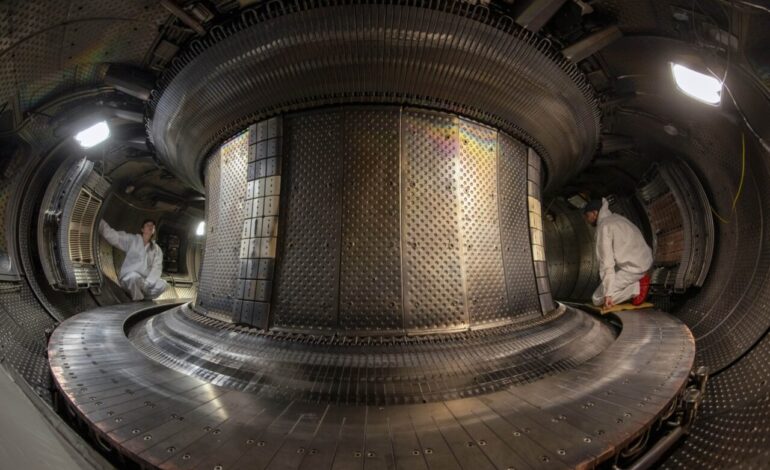MIT Researchers Take Major Step Toward Practical Nuclear Fusion

A team of researchers at the Massachusetts Institute of Technology (MIT) has made significant progress in overcoming one of the key challenges in achieving large-scale nuclear fusion. This breakthrough brings humanity closer to harnessing a clean, abundant energy source akin to the processes that power stars. Their findings were published in the journal Nature Communications on March 4, 2024.
Nuclear fusion has long been seen as a potential solution to the world’s energy needs, providing a safe and virtually limitless energy source. The researchers focused on the tokamak, a donut-shaped reactor that employs strong magnets to confine the plasma necessary for fusion reactions. While the tokamak has shown promise, significant hurdles remain, particularly in managing the plasma during operation and ensuring stability.
To address these challenges, the MIT team utilized a combination of fundamental physics principles and machine learning techniques. They developed a predictive model to forecast the behavior of plasma within a tokamak reactor, a task that has perplexed scientists due to the difficulties of observing conditions during a reaction.
The lead author of the study, Allen Wang, a graduate student at MIT, emphasized the importance of reliability in fusion energy production. “For fusion to be a useful energy source, it’s going to have to be reliable,” Wang stated. “To be reliable, we need to get good at managing our plasmas.”
Challenges of Managing Plasma in Tokamak Reactors
Operating a tokamak reactor presents unique challenges. The plasma can circulate at speeds of up to 100 kilometers per second and reach temperatures of 100 million degrees Celsius, hotter than the Sun’s core. When a reactor needs to be shut down, operators must carefully “ramp down” the plasma current to avoid damage. If this process is not managed correctly, it can lead to “scrapes and scarring” on the reactor’s interior, requiring costly repairs.
Wang explained, “Uncontrolled plasma terminations, even during rampdown, can generate intense heat fluxes damaging the internal walls.” The delicate balance of maintaining plasma stability is crucial, as any missteps during operation can lead to significant financial and operational consequences.
The researchers’ model utilizes data from the TCV, a small experimental fusion device located in Switzerland. By combining a neural network with a model of plasma dynamics, they trained the algorithm on various experimental conditions, including plasma temperature and energy levels. This approach allowed them to simulate and predict plasma behavior throughout the fusion process.
Innovative Solutions Through Physics and Machine Learning
The team successfully applied their model to actual TCV operations, guiding reactor operators through the ramp-down process with increased safety. “We did it a number of times, and we had statistical confidence that we made things better,” Wang noted.
The implications of this research extend beyond immediate operational improvements. By advancing the understanding of plasma dynamics, the researchers are addressing fundamental scientific questions that could enable routine use of fusion energy in the future.
Wang concluded, “What we’ve done here is the start of what is still a long journey. But I think we’ve made some nice progress.” This work represents a crucial step towards making nuclear fusion a practical and reliable energy source, potentially transforming the landscape of global energy production.
As this research continues to develop, the prospect of a future powered by clean, limitless fusion energy comes closer to reality, offering hope for a sustainable energy future.






